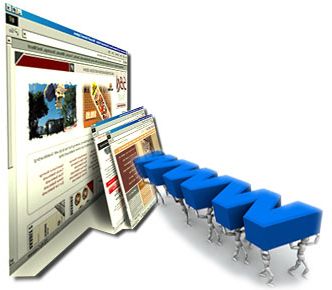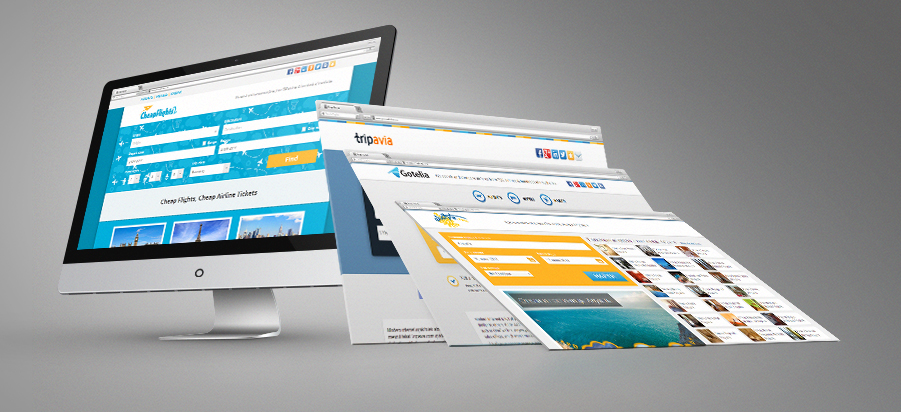Basics of web design. How to start developing a website?
 The other day, the young lady employee came to me with a modest request – to teach her web-design. And, although my experience in this industry is calculated over the years, not only in design, but also in providing information about it … – I was confused. I do not know where to start. I recommended reading a number of useful books, in particular, “Web Design” by Dmitry Kirsanov – a book useful both for beginners and experienced developers, “HTML in Web Design” by Alexey Petyushkin, several interesting textbooks on working with graphics …
The other day, the young lady employee came to me with a modest request – to teach her web-design. And, although my experience in this industry is calculated over the years, not only in design, but also in providing information about it … – I was confused. I do not know where to start. I recommended reading a number of useful books, in particular, “Web Design” by Dmitry Kirsanov – a book useful both for beginners and experienced developers, “HTML in Web Design” by Alexey Petyushkin, several interesting textbooks on working with graphics …
The future student has computer and Internet experience, speaks fluent English – which facilitates the learning process to some extent, but she didn’t want to follow recommendations like “buy books on design, graphics, tools”, give live communication with examples and tests .
How did my experience begin? From the fourth Adobe PhotoShop and CorelDraw, from 32Mb of RAM, from advertising and printing, however, like many in those already distant 95-96 years. Business cards, advertising booklets, cassette covers, later – on CDs, then – skins and interfaces for local programs, icons and 16-colored buttons – a magical space for imagination. Order for the first site.
My first site was a copy of a booklet of a small company that was selling special additives for motor oils, and there were few sections (and pages) – except for the main page – about the company, about the products, our prices and how to get us. ” The content and design, corporate colors and the logo were completely copied from the booklet, so there were no problems with the definition of the modular grid, nor with the choice of colors, and provided that I worked with graphics for a long time and quite successfully, the only task that stood before me – learn how to make (and make) documents hypertext.
Since then, many projects have been implemented – both static and informational dynamic, and with text design, a minimum amount of graphics – and flash, with a minimum amount of textual information. However, how to begin a story about web design for my student – I never decided.
So, dear student, what is a website? A website is a system of interconnected hypertext documents, designed by a web designer, taking into account the goals and objectives of the project and meeting all requirements of usability. Each document has a certain structure – headers and completion of the document, due to which it can be displayed in the browser, contains information in the body of the document and design within the framework of the approved design. The transition from one document to another is carried out through hyperlinks. And that’s all.
Understanding the structure of .html (in the simplest case) of the document is not difficult; in the near practical lesson we will, of course, master the main tags, ways of formatting text, illustrations, tables and forms.
It is enough to understand the difference between the content of the document and its presentation. There are certain rules and parameters for the formation of the document, mandatory tags, structure, there is information, the content of the document (text, tabular data, illustrations …) and there are various ways to visualize and design this information.
In the future, we take a closer look at all the issues that relate directly to the design and assembly of pages. Language html / shtml, browsers, their features and differences in the interface and visualization of web documents, languages and encodings, tools for layout and processing graphics, languages and encodings, elements of programming, optimization and promotion of sites. These are all technological problems. However, the development of site design never begins with the layout of documents. And it begins …
… From analyzing the goals and objectives of the project (one thing is to attract the visitor to sell as many products as possible, the other is to cause the maximum number of emotions in him with unusual graphics or brilliant verses). From an assessment of the target audience – potential visitors (customers) of this project. Is every developer willing to take the time to draw himself such a “portrait of his visitor” – who is he? A teenager looking for information about a favorite rock band? A housewife who is trying to order on-line juicer? A pensioner, for whom it is so important to track the latest political news, a programmer who needs documentation on the program’s work, a student, an artist, a manager?
The task of the designer is precisely in the selection of color and placement of elements in a manner that is pleasant and convenient for the end user. And from who he is, the consumer, what age group, how much he is “prepared” for using the navigation menus and getting information – both the structure of the site and its design depend.
Further. For example, you already got an idea about the target audience of your project. However, you still cannot start drawing graphic elements. Why? Because you do not have a model of your future design.





